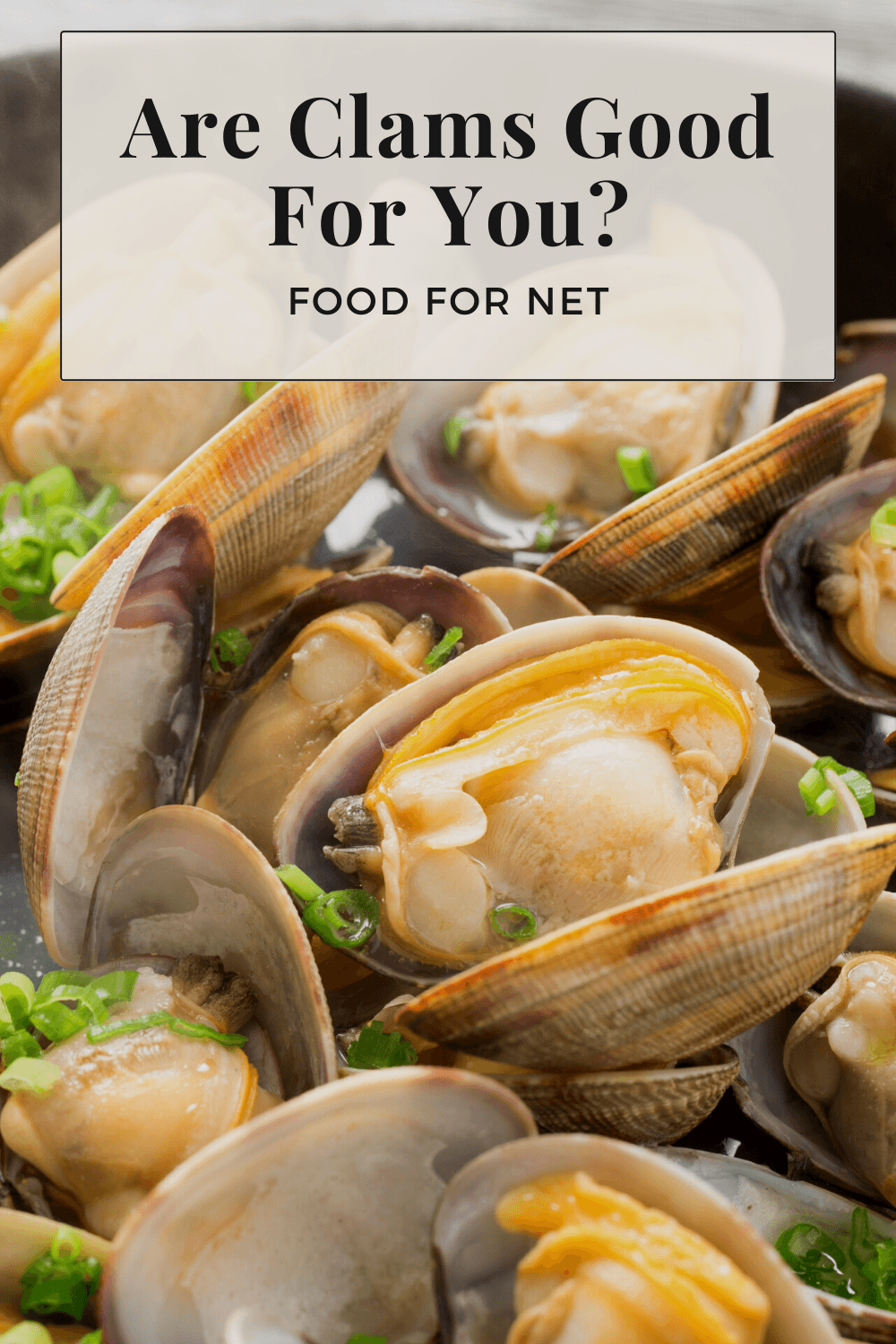
Seafood is always incredibly popular, providing an amazing flavor and plenty of nutrients. While clams aren’t nearly as popular as oysters, many people enjoy them regularly. You might eat clams raw, enjoy them cooked, add sauce to them, or even have them as part of a clam chowder. What about health, though? Are clams good for you?
The immediate answer here is yes, given that seafood itself is incredibly healthy. Still, we’re not interested in short answers here.
Nutrition is more nuanced than that. To really find out about clams, we need to look closer at their nutritional profile, benefits, and hidden risks. After all, knowing what you’re eating is perhaps the most powerful way to stay healthy.
Are Clams Good For You?
- What Clams Offer
- Benefits Of Clams
- How Clams Could Be A Problem
- Do Clams Contain As Much Omega 3 As Fish?
- Are Raw Clams Safe?
- Clams Versus Oysters
- Final Thoughts
What Clams Offer

Before we dig into the specific health benefits, let’s talk about what clams give you.
For starters, they’re an excellent source of protein, with a 100 gram serving giving you almost 13 grams of protein and less than 3 grams of carbs.
This protein is very relevant. Not only does it keep you satisfied, but protein is made up of amino acids. These are the building blocks that are used throughout our bodies. To put it simply, we couldn’t function if we didn’t get enough protein.
Clams are also a complete source of protein, giving you all the amino acids that you need. While there are plenty of other options for protein too, clams stand out because they’re low in calories. This is fantastic when you’re hoping to lose weight or stay healthy.
The Nutrient Composition
Clams are pretty exciting for nutrients too. That same 100 gram serving gives you more than 800% of your daily value (DV) for vitamin B12. The levels of other key nutrients look like this:
- Iron: 78% DV
- Selenium: 35% DV
- Manganese: 25% DV
- Vitamin C: 22% DV
- Phosphorous: 17% DV
- Copper: 17% DV
- Riboflavin: 13% DV
- Niacin: 9% DV
That’s not all, either. Those are just the most prominent vitamins and minerals. There are smaller amounts of other ones as well. You’re only getting around 74 calories per 100 gram serving, which makes clams a nutrient-dense food.
Needless to say, all of these nutrients are important. Our bodies use them in many ways. Without them, we couldn’t function at all.
The Omega 3 Fatty Acids
We can’t forget about omega 3 either. This is a type of polyunsaturated fatty acid. It’s famous, as it has been heavily researched and associated with a shocking array of health benefits.
There’s another thing to think about too, your omega 3 intake versus omega 6. These are both types of healthy polyunsaturated fats, but their effects aren’t always the same. Instead, research suggests that the ratio of omega 6 to omega 3 could be extremely relevant.
Consuming high amounts of omega 6 and not enough omega 3 may increase health risks, perhaps leading to higher inflammation and a greater chance of some diseases.
This is a serious issue, as modern diets are often high in omega 6. Plus, we’re regularly told to replace saturated fat with unsaturated and polyunsaturated fats. That practice often increases our omega 6 intake.
So then, the omega 3s in clams are incredibly helpful. They start to bring your ratio of omega 6 to omega 3 back to where it needs to be.
Benefits Of Clams

Reduce The Risk Of Iron Deficiency
Clams provide a decent amount of iron, close to 80% of your daily needs in a single 100 gram serving. What’s more, much of this is in the heme iron form. Our bodies absorb heme iron much better than the non-heme version found in plants, leading to more potential benefits.
Iron is important for two reasons. First, it plays vital roles in our bodies. We need it so that we can grow and develop well. Iron is also essential in hemoglobin, so it’s required for the transport of oxygen around our bodies.
Second, many of us aren’t getting enough iron. This can lead to a variety of problems, including an irregular heartbeat, an increased risk of heart disease, fatigue, headaches, and more. Iron deficiency can also compromise your immune system and put you at risk for depression.
They’re Naturally Low In Mercury
Here’s another cool thing. Clams are low in mercury, containing less of it than many other types of seafood.
This is fantastic news, as mercury can cause serious issues for human health and is the main reason for limiting your seafood intake. Turning to low mercury choices, like clams, is an easy way to get the omega 3 fatty acids you need, without putting your health at risk.
They Can Promote Heart Health
The omega 3 fatty acids in clams are particularly important for your heart. They help to decrease a variety of heart disease risk factors, including blood pressure and triglycerides. They’ve also been shown to reduce the risk of heart disease and strokes.
This effect is so well-known that fish oil supplements are often used to protect your heart. It’s not just the omega 3s that help with your heart either. Clams also contain potassium, which can lower your blood pressure.
Can Help With Your Brain
Omega 3s are also renowned for their effects on your brain. They may help to keep your brain functioning effectively and perhaps even protect you against serious illnesses like Alzheimer’s disease.
That’s not all. Omega 3s are relevant for mental health as well. They can help to lower the risk of conditions like anxiety and depression, while improving outcomes for people with such conditions.
Some of the nutrients in clams are relevant as well, such as the vitamin B12, which has been linked to mood improvements. Clams are actually an exceptional source of vitamin B12, giving you much more than you’ll ever get from meat.
There’s also choline, which is essential for producing acetylcholine – a neurotransmitter that influences brain function and memory.
How Clams Could Be A Problem

They Can Be Contaminated
Contamination is a huge issue with seafood. After all, our oceans are getting more polluted as time goes on, which decreases the quality of seafood and increases risk.
Shellfish are a particular problem, as they filter feed. This means they’re filtering water to get microscopic organisms that they then feed on. While this process keeps the mercury content of clams low, it does raise the risk for other types of contamination.
What makes things worse is the fact that you can’t easily spot contamination by simply looking at the clam. It will often look, smell, and taste the same even if it has been contaminated or contains toxins.
To protect yourself, you need to look for shellfish from reliable suppliers, particularly clams that have been sourced from uncontaminated environments. Look for companies that are up-front about exactly where their shellfish come from and have plenty of quality control processes.
They’re Contain A Moderate Amount Of Carbs
Meat and seafood are often assumed to be free from carbs, but this isn’t always the case. Some types of shellfish do contain carbs.
This is the case for clams. You end up with around 2.5 grams of carbs per 100 grams.
This isn’t an extreme amount of carbs. It’s much less than what you’ll find in carb rich foods like bread, pasta, or quinoa. Still, the carb content could be an issue if you’re following a keto diet.
Also, 2.5 grams is just an estimate of the carb content. Some estimates suggest a higher level, like 5 grams of carbs for the same serving size. There could also be differences between one species of clams and the next.
Such patterns are why just counting carbs often isn’t enough. Keto dieters may also need to pay close attention to their bodies and look for any signals that they’re dropping out of ketosis.
They’re Relatively High In Cholesterol
Despite all their benefits, clams do contain a decent amount of cholesterol, giving you roughly 67 mg of cholesterol per 100 gram serving.
Heart health advice often suggests consuming somewhere between 100 mg and 300 mg of cholesterol per day. Even if you’re trying for the 300 mg target, 67 mg of cholesterol in a single serving is getting up there.
Remember that other ingredients might contain cholesterol too or unhealthy fats. For example, cooking clams in butter or using butter in the sauce means you’re consuming a decent amount of saturated fat.
Now, what this cholesterol means for your health is debatable.
It’s long been assumed that high cholesterol in your diet leads to cholesterol in your bloodstream, which then increases the risk of plaques and blood clots. For most people, though, this doesn’t seem to be the case at all. Instead, the cholesterol in your diet may have minimal effects on blood cholesterol levels.
This should mean that you can eat clams without putting your heart at risk. However, if you’re following a low cholesterol diet, you might still need to be careful with clams.
Do Clams Contain As Much Omega 3 As Fish?

Oily fish like salmon, tuna, and sardines are your best choice for omega 3 fatty acids. Clams do contain a decent amount, but they’re not as powerful as fish. There’s also the issue of cholesterol, which tends to be higher in clams than in fish.
In these senses, then, clams mightn’t be as powerful for health as fish.
But, clams do still have plenty going for them. Besides, you don’t need to choose the healthiest possible foods every time. Regardless of whether they’re the absolute best choice or not, clams are certainly good for you.
Are Raw Clams Safe?
Just like oysters, clams are sometimes eaten raw. The practice allows you to fully experience the clam meat’s flavor and texture, both of which change after the clam has been cooked.
For many people, eating raw clams is a delicacy that’s not to be missed.
The practice does come with health risks, as the raw clams can carry parasites, bacteria, and viruses – all of which can make you sick. In rare cases, raw clams could even lead to serious illness or possibly death.
Vibrio bacterial infection is one of the most notable issues. Roughly 80,000 people experience this each year, 100 of which may die from the infection.
To make matters worse, you can’t tell whether a clam has been infected with dangerous bacteria or not. It’s going to look and smell exactly the same.
Buying fresh oysters from colder waters decreases the risk of Vibrio infection, which could mean avoiding oysters from May to October, as this is when the water is the warmest. Still, no matter how cautious you are, the risk of serious illness remains.
What does this mean in practice?
If you’re healthy, then the risk of infection and serious illness from raw clams is low. You should be able to have the clams periodically without any notable problems.
If you have a serious health condition, are taking medication, are pregnant, or are above 60, the equation changes. In such situations, the risk from raw clams becomes much higher and you might need to avoid them entirely.
Thankfully, cooked clams are still delicious. After having these for a little while, you might not miss raw clams at all.
Clams Versus Oysters

Clams and oysters are both classified as mollusks and also look similar. However, there are distinct differences.
For one thing, clams have a smooth shell, while oysters have a rough one instead. There’s also the chance of finding a pearl in an oyster – something that can’t happen with a clam.
There are flavor differences too. Clams tend to be brinier and more pungent than oysters. They’re also a little chewier. The chewiness and intensity of flavor don’t appeal to everyone, but each to their own; plenty of people still love clams.
Final Thoughts
It’s easy to see how clams could help you. They’re packed full of nutrients and omega 3 fatty acids, plus they’re a low calorie source of protein. What more could you ask for?
The biggest problem is contamination. Choosing clams from reliable vendors should help here and clams are regularly tested to prevent serious issues.
Cooking clams before eating them reduces the risk even further. Doing so mightn’t be appealing if you love the taste of raw clams. Still, sometimes it’s more important to protect your health, especially if you’re in a high risk group.
Frequently Asked Questions
How Do You Store Clams?
Clams are a little tricky, as they need to be alive when you cook them. Because of this, your storage approach needs to allow them to breathe.
The most popular approach is keeping clams in a single layer in the fridge, covered with a damp cloth. Don’t use an airtight container, as this risks smothering them. Even when stored well, you need to use the clams quickly – generally within a day or two.
When Are Clams In Season?
Clams don’t really have a season, as they can be harvested throughout the year and are always available. That said, the best quality clams are thought to be those harvested at the beginning of summer, right before spawning.
However, you will need to check the regulations in your local area, as rules around clam harvesting vary depending on where you live. Some places may have a season to help protect the environment.
Are Clams High In Cholesterol?
Clams are often classified as a moderate cholesterol food, giving you around 57 mg of cholesterol in a 3-ounce serving of clams. This isn’t an extreme amount, especially as you get around 187 mg of cholesterol in a large egg. Still, even small amounts of cholesterol do add up.
Does this mean you should avoid clams? Not necessarily.
Cholesterol in food isn’t nearly as harmful as we once thought. This is because our bodies create cholesterol themselves too, so high cholesterol in our diet doesn’t necessarily raise heart disease risk.
How Long Are Clams Good For?
Live fresh clams have an exceptionally short shelf life, lasting just one or two days in the fridge.
There are some cases where clams last longer, especially if they were very fresh. Some people manage to keep them for a week or perhaps even more. However, this is something to be very cautious with, as you don’t want to get sick from your clams.
Are Clams Bad For Gout?
Some foods are high in compounds called purines, which raise the risk of gout and also gout complications. Seafood is particularly concerning, as most types contain a decent amount of purines. Clams are one of the worst options, providing around 138 mg of purines per 100 grams.
This means that if you’re at risk for gout or already have it and are trying to minimize pain, it’s probably best to avoid clams entirely, Or, at the very least, stick to tiny portions.


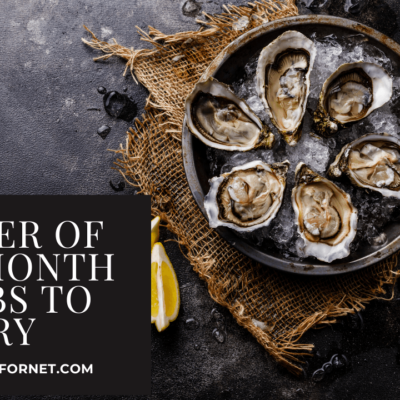
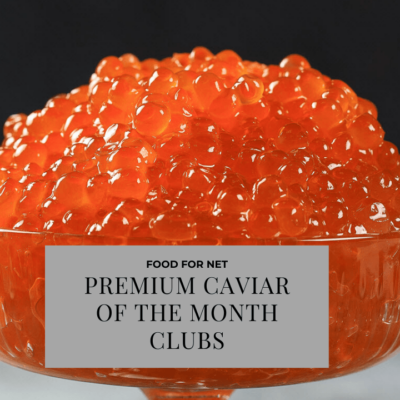

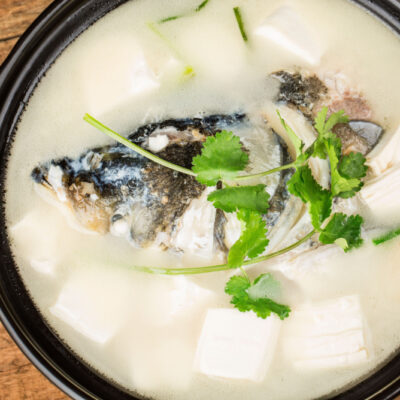

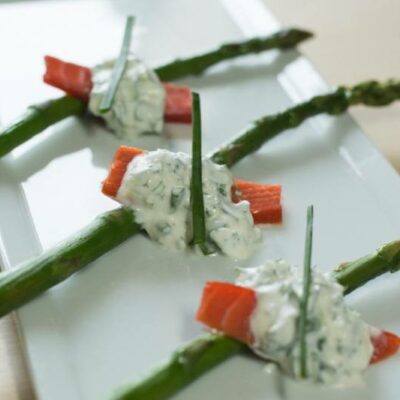
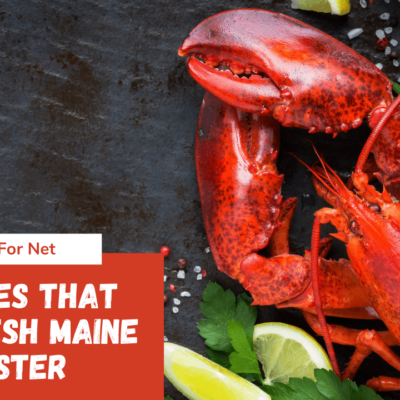





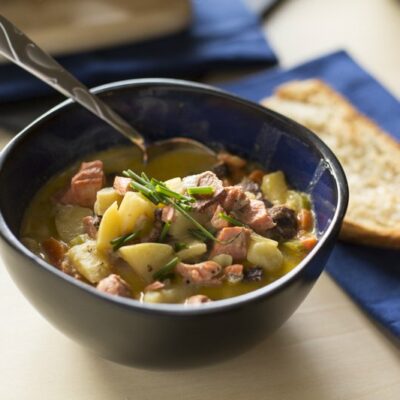

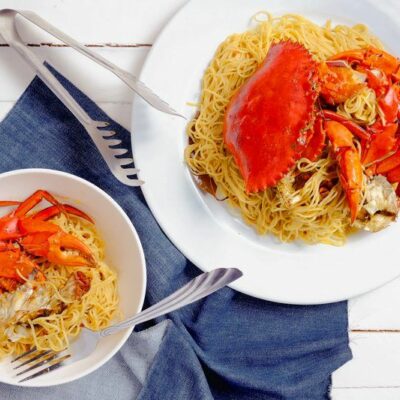
 Are Anchovies Good For You?
Are Anchovies Good For You?
Leave a Reply